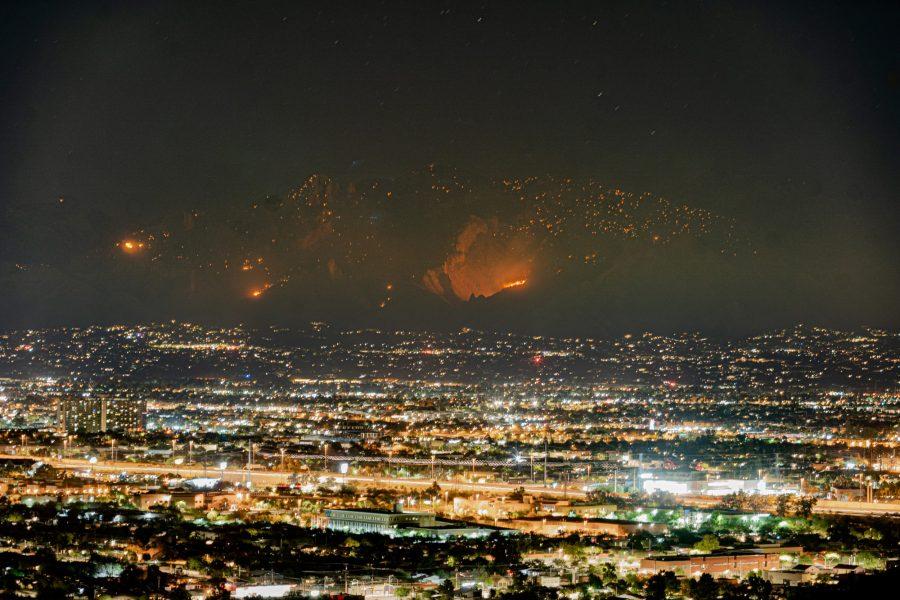The Bighorn Fire in the Catalina Mountains — started by lightning strikes from Friday night’s storm — is continuing to grow and leave its mark on the surrounding area. Still, at only 10% containment, the fire has now reached 3,277 acres, according to the Fire, Weather & Avalanche Center.
The University of Arizona has sent out a series of alerts from the Pima County Sheriff’s Department and the Pima County Office of Emergency Management. These alerts have pertained to parts of the Catalina Foothills area. The area of Alvernon Way and First Avenue is currently being evacuated. According to the Sheriff’s Department, there are currently 298 homes in the evacuation zone.
RELATED: Wildfire season surges in southern and central Arizona
Additionally, the popular hiking area of Catalina State Park is currently closed as a result of the fires. The Arizona Emergency Information Network has also issued warnings to stay aware of fire impact in other recreation areas, such as Pusch Peak, Romero Canyon and Finger Rock.
Since smoke from the Bighorn Fire began to move into the Tucson Basin, the Pima County Department of Environmental Quality has issued four air quality advisories. Most recently, an Air Quality Health watch was issued for Thursday, pointing out that there could potentially be higher levels of ground-level ozone as well as particulate matter.
Between Monday and Tuesday, ozone levels increased dramatically. According to the Arizona Department of Environmental Quality, the Thursday ozone classification in Tucson is 80, which is moderate on the U.S. Air Quality Index.
In response to the fire, a type 2 Southwest incident management team has taken on mitigation of the flames, according to Cindy Wolfe, a fire information officer for the Bighorn Fire. She described that the anticipated containment date for the Bighorn Fire is June 20, but for now, there are many challenges standing in the way.
RELATED: Arizona sees increased ICU usage, upward trend of COVID-19 cases
The flames are continuing to spread due to high winds, low humidity and an abundance of dry fuels such as tall grass and brush. According to Wolfe, this fire differs from other recent fires in southern Arizona.
“You had some fires prior to this one that was larger in acreage but they didn’t have the fuel complexity this one has, which includes more fuels,” described Wolfe. “Some of the previous fires were bigger acreage, but they were quicker fires — they were not really really hot burning fires that blew across canyons because of the winds.”
Another difficulty is the nature of the terrain and the safety of personnel. Wolfe explained that it is highly difficult for firefighters and public safety personnel to attack the fire straight-on upon such rugged terrain.
The major concern right now is containing the rapid growth of the fire.
“The concern is, they are predicting some more rapid-fire growth, pretty much to the northeast, because of the winds,” Wolfe said. “They said that the fire is going to continue to back down into canyon ravines, and into Pima and Finger Rock Canyon where there is a lot of grass.”
UPDATE: June 11 at 10:45 p.m.: The Bighorn Fire is still at 10% containment and is “expected to be active and highly visible again tonight due to low nighttime relative humidity,” according to a press release from the Southwest Coordination Center.
Follow Quinn McVeigh on Twitter









